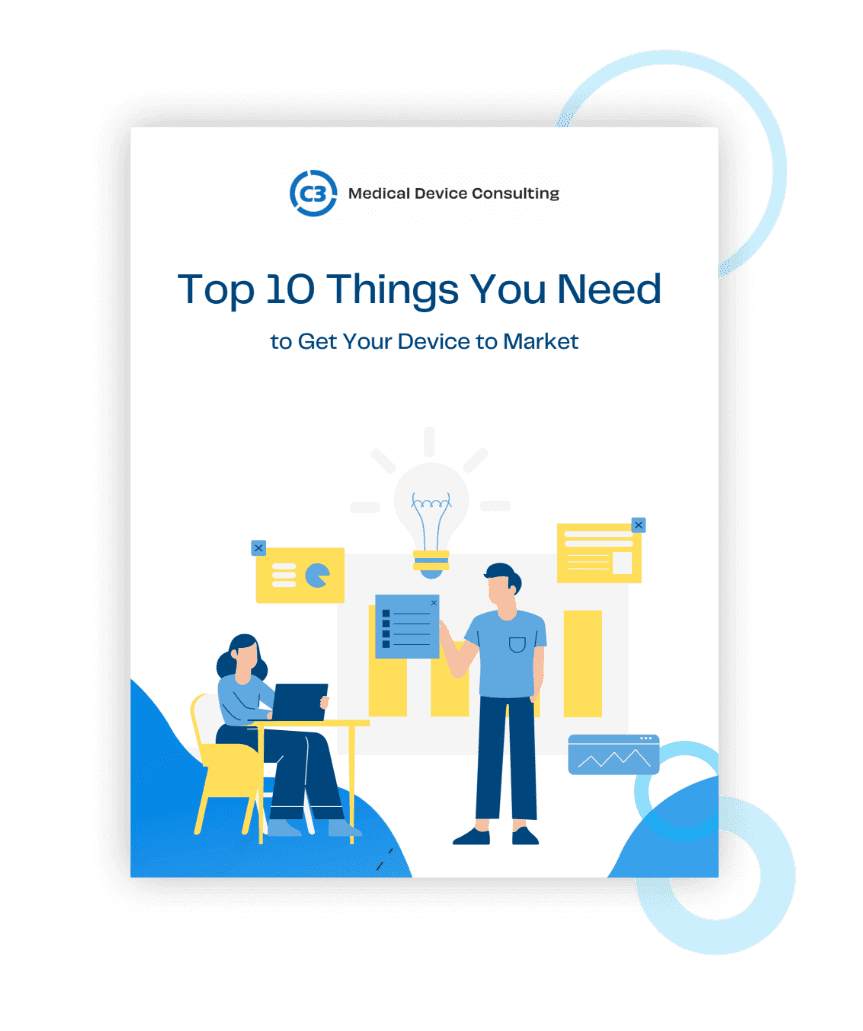One of the most complex and time-consuming parts of a medical device project is the design and engineering. After all, this is the proof-of-concept phase in which the project moves from an idea to a physical object that works as intended and complies with all necessary regulations.
It’s also the phase where many know, or quickly realize, they need help with things like programming, schematics, effective prototyping and testing, and generally translating an amazing idea into an object that can be manufactured at scale and used successfully by the target audience.
In this article, we’ll break down this potentially overwhelming phase to give you a sense of where you may need outside expertise and support. Keep reading to learn more.
- Define your idea in detail. Before moving ahead with design and engineering, be sure your idea is nailed down. This includes doing background research on the problem you want to solve and how to solve it (including your device’s key differentiators from competition, who it impacts most, your target market (e.g., hospitals, clinics, medical offices, patient age, geography), potential challenges you anticipate, and questions you can’t answer about the process or the target market.
- Develop the design. From shape and appearance to inner workings and connectivity, a good design should be comprehensive. This helps down the road during prototyping, testing, and manufacturing. A good design often includes detailed schematics and drawings on paper or with CAD, ideas for materials or other features and specific needs, a description of the power supply (e.g., replaceable or rechargeable battery), if it will utilize an app or be self-contained, electronics diagrams, and plans for hardware, firmware, and software.
- Assess regulations and other compliance matters. The FDA and other governing bodies regulate medical devices closely, which means you need to be aware of any and all regulations and requirements to stay in compliance. Missing even a small part of this can delay or derail your project. Be sure to note all compliance and regulatory matters regarding the device itself as well as its functionality, end use conditions, risk management plans, testing, and plans for avoiding device failure.
- Make a prototype. This is your opportunity to make sure the design works as intended and that it is manufacturable. There may be multiple ways to create certain components, layout a PCB, or even shape a case, and not all will be equally efficient to mass produce. Making prototypes shows clearly where problems may arise when it is still relatively easy to make adjustments.
- Test and refine. Testing is often an iterative process, so you might end up making multiple rounds of adjustments over rounds of testing. This must be done methodically, with all changes and outcomes tracked carefully. Testing and refining apply to electrical, electronic, and software functionality as well as the physical device. It’s also important to follow any regulatory or other requirements for testing.
- Manufacture and bring it to market. This step includes the initial smaller production run as well as your plans to scale up production over time. Depending on your initial distribution and plans to bring the device to market, it’s important to come up with a viable schedule that considers supply chain, lead time, and other critical factors.
At any stage of the process, you may feel overwhelmed by questions or a lack of expertise in certain areas. That’s when it’s time to consider working with a partner like C3 Medical Device Consulting that can guide you through the process, identify and work on issues, and help your device get to market successfully.
Project engineering support and services from C3 are designed to help your project succeed, including:
- Knowledge of regulatory and compliance matters
- Electronics design and engineering
- Software design
- Hardware design
- Mobile app/IOT connectivity and security
- Testing and validation/verification
- Prototyping and manufacturing
Our team brings years of experience plus design and engineering expertise to each project. We can extend your in-house team’s capabilities and give you extra support wherever you need it. Learn more about our project engineering services or contact us for a free design audit.










